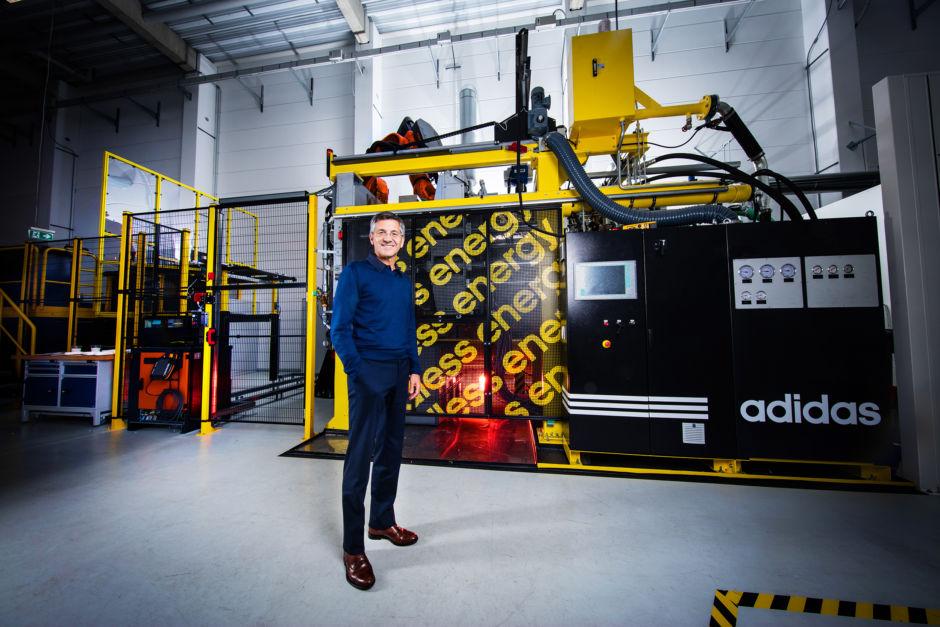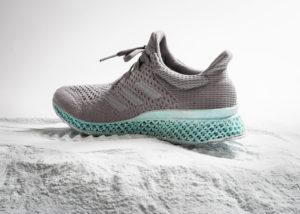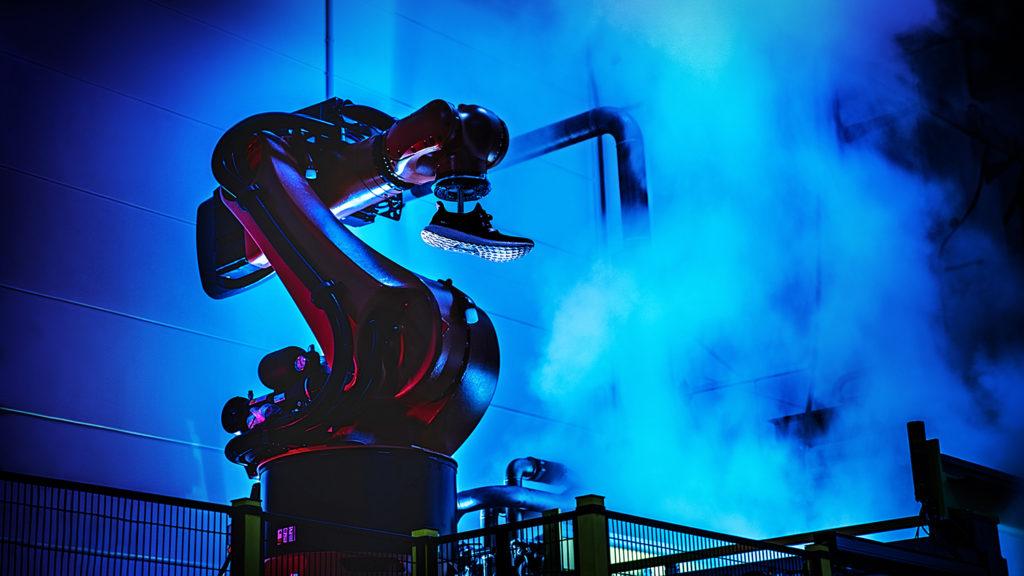![]() German sportswear manufacturer Adidas is reestablishing its factory in its home country. The Bavarian town of Ansbach will soon see the birth of a new Adidas manufacturing factory filled with innovative and technologically sophisticated machines including 3D printers. As one of the key players within the $80 billion sportswear industry, Adidas has always been exploring unique and efficient methods of manufacturing its product lines, ranging from shoes to accessories.
German sportswear manufacturer Adidas is reestablishing its factory in its home country. The Bavarian town of Ansbach will soon see the birth of a new Adidas manufacturing factory filled with innovative and technologically sophisticated machines including 3D printers. As one of the key players within the $80 billion sportswear industry, Adidas has always been exploring unique and efficient methods of manufacturing its product lines, ranging from shoes to accessories.
In December of 2016, 3DPrint.com reported the sale of Adidas’ limited edition 3D printed running shoes, which were also sponsored to Olympic-level athletes. The commercialization of its 3D printed product line was announced only four months after the initial introduction of its first pair of 3D printed shoes.
Observing the commercial success of its 3D printed products, Adidas is now launching a factory in Germany called “Speedfactory” in collaboration with local manufacturing firm Oechsler Motion to produce and distribute high-standard running shoes at significantly faster speeds. To reduce manufacturing times and production periods, Adidas will use 3D printing or additive manufacturing methods as the core technology of its factory.
By mid-2017, the German sportswear giant aims to produce roughly 500,000 pairs of shoes annually – nearly 1,370 pairs of shoes on a daily basis. In order for Adidas to match its global production level of 300 million pairs of shoes, the company will use high performance and enterprise-grade 3D printers.
While the Speedfactory will rely on 3D printing technology to hasten its manufacturing process, Gerd Manz, Adidas head of technology innovation, also believes the technology will optimize what is arguably the most important phase of development: prototype design. Adidas handles large-scale operations all across the globe, from product design to manufacturing. To introduce new models, product designers, manufacturers, marketing agents, and the financial department must all follow the same roadmap, which is difficult for a company that is expected to match hundreds of millions of orders.
 According to the Economist, the entire process of designing a product, testing it, ordering necessary materials, shipping it to manufacturers and distributing the final product to retail stores can take up to 18 months. The most time-consuming process of all is the sending and receiving stage of prototypes. For both manufacturers and material suppliers to approve the prototype, they must first see the product, test it and send it back to Adidas. If the product needs further improvement or alteration, the process requires even more time.
According to the Economist, the entire process of designing a product, testing it, ordering necessary materials, shipping it to manufacturers and distributing the final product to retail stores can take up to 18 months. The most time-consuming process of all is the sending and receiving stage of prototypes. For both manufacturers and material suppliers to approve the prototype, they must first see the product, test it and send it back to Adidas. If the product needs further improvement or alteration, the process requires even more time.
There is a solution to the time-consuming processes of this stage of development – the utilization of 3D printing and scanning technologies. To replace the traditional process of prototype testing, a 3D design program can be used to design a particular product. Within the program or software, designers will be able to specify which material is used in a certain part and accurately portray delicate measurements such as dimensions.
Once the product design is ready, manufacturers and material suppliers can simply receive the scan file from the product designers, print it using an enterprise-grade 3D printer and test it. If there needs to be an improvement or change, manufacturers can simply change the product’s design within the program and send the file back to the product designer. This way, the prototype testing phase can be reduced from a few months to a few days.
The optimization of this period in the development phase alone could save Adidas up to 5 months. With this reduction and the optimization of their manufacturing process, the firm can bring out a new product within a year.
On top of the implementation of 3D printing technology, the Adidas Speedfactory will replace thousands of human workers with robots, to automate some of the manual processes in the manufacturing phase. In comparison to its Asian factories, which house thousands of human workers, the Adidas Speedfactory will be run by around 160 employees.
Because many time-consuming operations will be overtaken by robots and the prototype testing phase is optimized by 3D printing machines, Manz believes the Speedfactory will demonstrate unparalleled flexibility and production speeds.
More importantly, the reliance on robots, machines and 3D printers instead of human employees allows the Speedfactory to quickly adapt to changing products and manufacturing processes. For instance, in a traditional Adidas factory, the establishment needs to be shut down for a few days if it intends to switch from model A to model B, because machines have to be reprogrammed and retooled.
In an automated environment however, wherein there are less manual processes and machines are controlled by user-friendly interfaces, the factory will be able to switch production from one product to another almost instantaneously. Discuss in the Speedfactory forum at 3DPB.com.
[Source: the Economist / Images: Adidas]Subscribe to Our Email Newsletter
Stay up-to-date on all the latest news from the 3D printing industry and receive information and offers from third party vendors.
You May Also Like
Boom Supersonic Test Flies Demonstrator Aircraft
Boom Supersonic hopes to revolutionize air travel by reintroducing supersonic passenger flights. The company has amassed over $700 million in funding, with notable contributions from entities like Japan Airlines, and...
Conglomerates Are Auctioning GE Metal 3D Printers and More
As the additive manufacturing (AM) industry continues to slough through its economic downturn, we’ve seen not only smaller firms like Uniformity Labs and Arevo go belly up, but larger entities restructuring in...
Interview: GE Additive Provides Series 3 Metal Binder Jet Update
For another year running, I survived the bustling insanity that is formnext. With a reported 859 exhibitors, 196 speakers, 32,851 visitors (50% international), and 54,000 m² of exhibition space, Europe’s...
Del Toro’s Pinocchio Achieves Stop-Motion First with Metal 3D Printed Metal Puppets
Did you know that the stop-motion puppetry featured in Guillermo del Toro’s 2022 film Pinocchio was accomplished through the use of metal 3D printing? Our story begins in the year...































